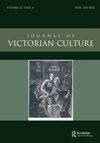The Jew in the Jamaican, the Amalgam in the Attic: A New View of Bertha Mason in Charlotte Brontë’s Jane Eyre
IF 0.2
3区 历史学
Q2 HISTORY
引用次数: 0
Abstract
In this essay, I extend the existing scholarship on the character of Bertha Mason Rochester by providing historical and textual evidence that Brontë represents Bertha’s ethnocultural background as an amalgam of Jamaican, Jewish, and Creole. In support of this thesis, I examine passages focusing on Bertha’s father and brother, and I describe the cultural meanings of Spanish Town (Jamaica) and Madeira (Portugal) with regard to Caribbean Jewish creole communities in the nineteenth century and their complex ties to England and the Continent. In contrast to previous claims (e.g. Heidi Kaufman’s), I argue that Brontë imbues Bertha with a literal (vs merely symbolic) Jewish lineage. Also, I consider Brontë’s portrayal of Bertha in relation to gender-specific tropes about Jews, which were familiar to Brontë and her Victorian readers. Furthermore, I discuss the sociopolitical zeitgeist during Brontë’s formative years and in the period in which she wrote Jane Eyre, with an emphasis on the pervasive attempts to evangelize England’s Jews and the vigorous debates about whether to grant Jews political rights in England. Additionally, I examine the phrase ‘stiff-necked’ as it is used in the novel and in the King James Bible, positing that it signifies an unwillingness to change. On the basis of these various forms of evidence, I argue that Brontë’s construction of Bertha as having hybridized Jewish origins helps make her an embodiment of radical otherness and stagnation. In this conceptual framework, the polarity between the ability versus inability to grow emerges as a core theme within the novel.牙买加人中的犹太人,阁楼上的汞合金:夏洛蒂-勃朗特《简-爱》中贝莎-梅森的新形象
在这篇文章中,我通过提供历史和文本证据,扩展了关于伯莎-梅森-罗切斯特这一人物的现有学术研究,证明勃朗特将伯莎的种族文化背景表述为牙买加、犹太和克里奥尔的混合体。为了支持这一论点,我研究了以伯莎的父亲和兄弟为中心的段落,并描述了西班牙镇(牙买加)和马德拉(葡萄牙)对于十九世纪加勒比地区犹太人克里奥尔社区的文化意义及其与英格兰和欧洲大陆的复杂联系。与以往的观点(如海蒂-考夫曼的观点)不同,我认为勃朗特赋予了贝莎字面意义上(而非仅仅是象征意义上)的犹太血统。此外,我还将勃朗特对伯莎的描写与关于犹太人的性别特异性陈词滥调联系起来加以考虑,这些陈词滥调是勃朗特及其维多利亚时代的读者所熟悉的。此外,我还讨论了勃朗特成长时期以及她写作《简-爱》时期的社会政治思潮,重点是向英国犹太人传教的普遍尝试以及关于是否给予犹太人政治权利的激烈辩论。此外,我还研究了小说和《詹姆士王圣经》中使用的 "僵硬的脖子 "这一短语,认为它意味着不愿改变。根据这些不同形式的证据,我认为勃朗特将伯莎塑造成具有混血犹太血统的人,有助于使她成为激进的异类和停滞的化身。在这一概念框架中,有能力成长与无法成长之间的两极分化成为小说的核心主题。
本文章由计算机程序翻译,如有差异,请以英文原文为准。
求助全文
约1分钟内获得全文
求助全文
文献相关原料
| 公司名称 | 产品信息 | 采购帮参考价格 |
|---|

 求助内容:
求助内容: 应助结果提醒方式:
应助结果提醒方式:


